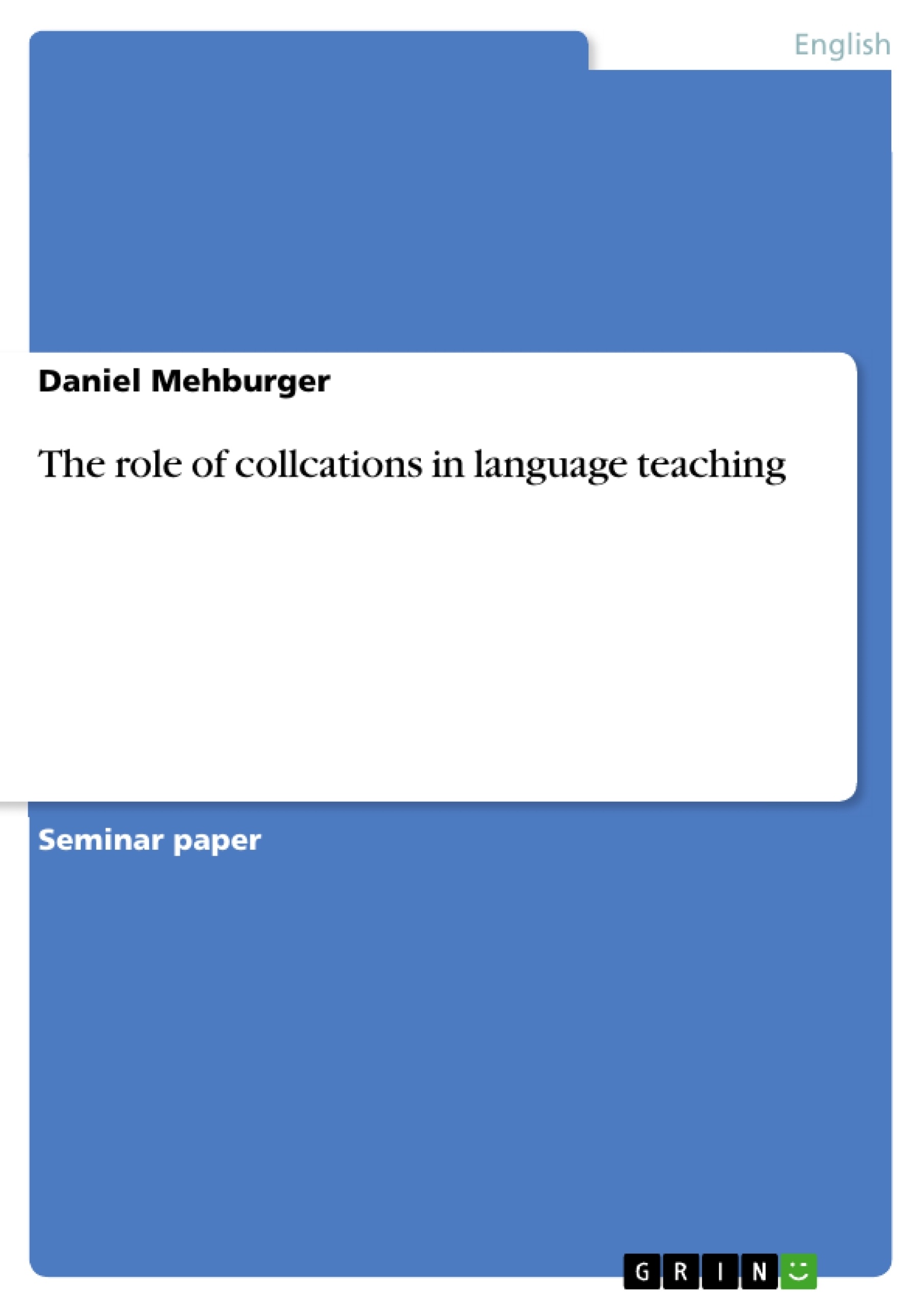Collocations are frequently used in everyday life (Hausmann 2003: 318). They can be found in literally every conversation or in written texts. The good thing about collocations is that they are quite easy to understand (Hausmann 2003: 312). Few German learners of English would have problems understanding what to take a picture or to catch a train means. But on the other hand, when producing oral or written language, knowing the idiomatic way to express one’s thoughts proves to be a lot tougher. It might take German learners of English quite some time to learn that you can say blond hair but not *blond car or that a good looking woman is not a *handsome woman, like a man would be called, but a beautiful or pretty woman (Herbst, Stoll, Westermayr 1991:
164).
So we can see that, in order to be able to produce idiomatic English and using words appropriately, collocations are needed, mostly for naming actions of everyday life or for specific language, like business English (Hausmann 2004: 318). This is the
harder part regarding collocations; after learning some basic vocabulary, particularly nouns, students of English need to learn which adjectives or verbs can be used together with the nouns (Hausmann 2004: 310).
Besides being important for young learners, collocations are also an important issue for advanced learners of a language. Researches showed that even students at a higher collegiate level who had good knowledge of English and knew grammar rules
very well, had problems producing text that sounds idiomatic, especially regarding collocations (Bahns 1997: 69ff.).
The relevance of collocations is clear to see, but precisely defining what a collocation is, is not. There are many different approaches to defining collocations. Among them, two approaches have emerged. The elder one is a computer-linguistic approach that, generally speaking, looks at how frequently words appear together (Herbst, Stoll, Westermayr 1991: 164). The other one looks at collocations from a semantic approach, and sees collocations as half-finished products which the speaker takes as one piece out of his memory (Bahns 1996: 24).
This paper will first look at how collocations are defined by the two approaches mentioned above and will then look at the role of collocations in the teaching and learning of English as a foreign language. The last chapter will provide some types of exercises which are useful for the teaching and learning of collocations.
Inhaltsverzeichnis (Table of Contents)
- Introduction
- Defining collocations
- Statistically oriented approach
- Semantic approach
- Collocations in language pedagogy
- The need for teaching and learning collocations
- Methodology for teaching and learning collocations
- Sample exercises for the teaching and learning of collocations
- Bibliography
Zielsetzung und Themenschwerpunkte (Objectives and Key Themes)
This paper explores the concept of collocations in language teaching, analyzing both their importance and methodologies for their integration into pedagogical practices. The paper focuses on contrasting definitions of collocations, highlighting the statistically oriented and semantic approaches.
- Defining collocations through statistical and semantic approaches
- The role of collocations in English language pedagogy
- The significance of collocations for both novice and advanced language learners
- Practical methodologies for teaching and learning collocations
- Sample exercises designed for the effective teaching and learning of collocations
Zusammenfassung der Kapitel (Chapter Summaries)
The first chapter, "Introduction," presents a compelling case for the importance of collocations in language acquisition. It highlights the frequency of collocations in everyday language and the challenges learners face in producing idiomatic English. The chapter emphasizes the need for learners to grasp the interplay between words to achieve fluency.
The second chapter, "Defining collocations," delves into two prominent approaches to understanding collocations: the statistically oriented approach and the semantic approach. The statistically oriented approach, pioneered by John Sinclair, relies on analyzing the frequency of word co-occurrence in large corpora. This approach aims to identify patterns and associations between words through data analysis. The semantic approach, in contrast, views collocations as pre-existing units of meaning that speakers retrieve from memory. This approach emphasizes the inherent semantic connection between words in collocations.
Schlüsselwörter (Keywords)
The primary focus of this paper is on collocations, specifically their role in language teaching and learning. Key concepts include statistically oriented and semantic approaches to defining collocations, methodologies for teaching collocations, and the importance of collocations for language acquisition. This paper explores the challenges learners face in producing idiomatic English and offers practical solutions for integrating collocations into language pedagogy.
- Quote paper
- Daniel Mehburger (Author), 2009, The role of collcations in language teaching, Munich, GRIN Verlag, https://www.grin.com/document/151972



